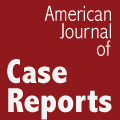Get your full text copy in PDF
Bogdan Kamiński, Łukasz Pawlak, Wojciech Split
Med Sci Tech 2009; 50(2): RA115-118
ID: 881670
Introduction: oromandibular dysfunctions are considered to be of psychosomatic origin, and stress appears to be of major importance. A Aim of the study:Investigation of the effect of compulsory military service on the occurrence of oromandibular dysfunctions in conscripted soldiers. Materials and methods: The study included 104 soldiers between 19 - 24 years old. The time of observation was 8.5 months. The methodology was based on a comparative clinical study focused on the occurrence of oromandibular dysfunctions performed in the first and the last week of the military service. The diagnosis of oromandibular dysfunctions was established in accordance with IHS criteria. Within the same time period, the emotional state of the study soldiers was evaluated by means of PSS-10 Perceived Stress Scale by Cohen. Results: The prevalence of oromandibular dysfunctions in soldiers serving compulsory military service was shown to increase significantly from 23.1% to 34.6% upon service completion. As for the symptoms of oromandibular dysfunctions: pain on mandibular movement increased from 34.6% to 43.3%, TMJ sounds – from 23.1% to 26.9%, limited mandibular mobility - from 15.4% to 19.2%, non-occlusal parafunctions - from 6.7% to 14.4%, and bruxism - from 43.3% to 44.2%. Among soldiers with bruxism, the number of subjects with permanent pathological changes was significantly higher (increase from 42 to 61 %). The average perceived stress index rose from 47.2% (SD 10.39) to 52.5% (SD 10.11). Conclusions: Compulsory military service is related to the prevalence of oromandibular dysfunction and its symptoms as well as reduced stress resistance in soldiers. (Clin Exp Med Lett 2009; 50(2):115-118)
Keywords: oromandibular dysfunction, Stress, soldiers, military service



